This is a schematic of the interior of Jupiter.
NASA
The Liquid Hydrogen Layer
The first liquid layer inside Jupiter, right under the atmosphere, is the liquid hydrogen layer. The hydrogen atmosphere becomes thicker and thicker, like a dense fog, with more and more liquid droplets, until the hydrogen completely changes from the gas form to the liquid form. This changes occurs at roughly 1000 km (650 miles) below the level of the first cloud deck.
Once the hydrogen is a liquid, it then behaves like the ocean does in forming currents for the purpose of carrying heat from the inside to the outside of Jupiter.
Under the liquid hydrogen layer is a layer made of liquid metallic hydrogen. This layer also forms complicated currents and motions, but because the layer is metallic, it is also able to conduct electricity. This is what produces Jupiter's big magnetosphere.
You might also be interested in:
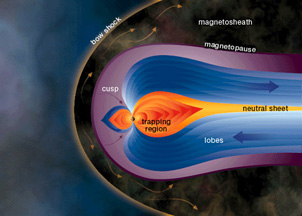
Jupiter's magnetosphere is very special. It is the biggest thing in the entire solar system. Not only is it big enough to hold all of Jupiter's moons, but the sun itself could fit inside. It goes all
...more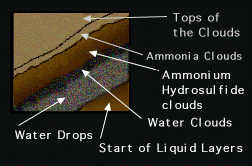
There is no surface to the giant planets, only a gradual change from the atmosphere, as shown in this drawing. The gases which Jupiter is mostly made of change to liquid inside Jupiter, but the change
...more
There is no surface to the giant planets, only a gradual change from the atmosphere, as shown in this drawing. The gases which Jupiter is mostly made of change to liquid inside Jupiter, but the change
...more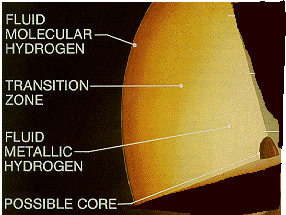
The first liquid layer inside Jupiter, right under the atmosphere, is the liquid hydrogen layer. The hydrogen atmosphere becomes thicker and thicker, like a dense fog, with more and more liquid droplets,
...more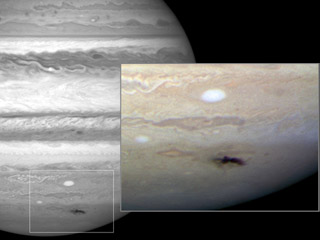
Anthony Wesley is an amateur astronomer in Australia. On the night of July 19, 2009, Wesley noticed a dark spot on Jupiter that hadn't been there before. He had discovered the remains of a huge impact
...more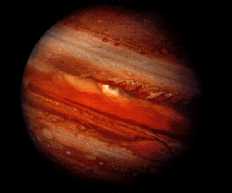
The giant planets have definitely changed since their formation. But how much remains to be seen. Most of the original air of the giant planets remains in place. (The earth-like planets lost most of their
...more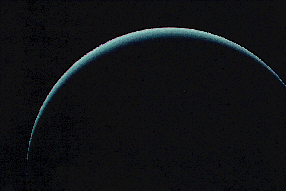
The mesosphere of Jupiter is a region of balance between warming and cooling. That essentially means that nothing happens there. Except for diffusion, the atmosphere is still. Upper reaches of the atmosphere,
...more













